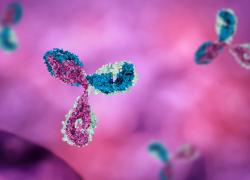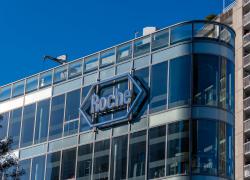
ASCO 2025 – J&J challenges its own multiple myeloma T-cell engagers
Meanwhile, Ichnos Glenmark takes a different trispecific multiple myeloma approach.
Meanwhile, Ichnos Glenmark takes a different trispecific multiple myeloma approach.

Johnson & Johnson already dominates multiple myeloma but it’s still looking for new options, and one of these, a trispecific T-cell engager, featured at ASCO on Tuesday. JNJ-79635322 hits both BCMA and GPRC5D, the targets of the company’s Tecvayli and Talvey respectively – but J&J believes that it could improve on these drugs, and the ASCO presenter suggested that it might even have Car-T-like efficacy.
Meanwhile, Ichnos Glenmark is taking a different tack with ISB 2001, a BCMA x CD38-targeting T-cell engager that also produced promising early results. However, further development will depend on the company finding a partner.
BCMA x GPRC5D
ASCO saw results from a global phase 1 trial in relapsed/refractory multiple myeloma, testing various doses of JNJ-5322. Patients had had a median of four prior therapies.
J&J believes that 100mg every four weeks has the best profile; at this dose ORR was 100% among 27 patients naive to BCMA or GPRC5D-targeting agents.
This led the presenter, Dr Niels van de Donk of the Amsterdam University Medical Center, to conclude that the project could have comparable efficacy to Car-T, with a more convenient, off-the-shelf profile.
Among patients previously exposed to BCMA or GPRC5D-targeting agents, the ORR was 55% across doses.
As for tolerability, Dr van de Donk noted an “improved or similar” safety profile versus BCMA and GPRC5D-targeting T-cell engagers. Still, at the go-forward dose there was one dose-limiting toxicity of neutropenia, and a fatal case of treatment-emergent pneumonia.
If JNJ-5322 makes it to market, a question will be how it might fit among J&J’s multiple myeloma franchise, which as well as Tecvayli and Talvey includes the anti-CD38 MAb Darzalex and the BCMA-targeting Car-T Carvykti.
J&J oncology’s vice-president of global medical affairs, Mark Wildgust, told ApexOnco during ASCO that he expects Darzalex to remain the foundation of therapy, but that JNJ-5322 could be given next, likely before Carvykti. That leaves the roles of Tecvayli and Talvey less clear, but this might be a nice problem for J&J to have.
And the existence of JNJ-5322 hasn’t stopped J&J testing Tecvayli and Talvey in combination, for example in the phase 3 MonumenTAL-6 trial, due to complete next year.
BCMA x CD38
On Monday the phase 1 TRIgnite-1 trial of Ichnos Glenmark’s ISB 2001 reported an ORR of 79% among 33 patients receiving what was deemed an active dose, 50µg/kg or more. Patients in the study were very late line, with a median of six prior therapies.
The response rate rose to 84% among those naive to Car-T or T-cell engager therapy, but was still 71% among those who had previously received these therapies, and 72% in patients refractory to anti-CD38 treatment.
Ichnos Glenmark, a collaboration between US-based IGI Inc and India’s Glenmark Pharmaceuticals, is focused on patients who’ve exhausted other options including T-cell engagers and Car-T. Cyril Konto, the company’s chief executive officer, told ApexOnco that 6,000-10,000 US patients each year fitted this bill, and that a single-arm phase 2 trial could support accelerated approval in the post-BCMA setting.
However, the company is seeking a partner for ISB 2001 so it can focus on its broader pipeline, he added. Ichnos Glenmark is “in active discussions with multiple interested parties”, Konto concluded.
Cross-trial comparison of trispecific T-cell engagers at ASCO
JNJ-79635322 | ISB 2001 | |
|---|---|---|
| Company | Johnson & Johnson | Ichnos Glenmark |
| Targets | BCMA x GPRC5D | BCMA x CD38 |
| Trial | Ph1 (global) | TRIgnite-1 (global) |
| Headline ORR | 100% (RP2D & BCMA/GPRC5D-naive only) | 84% (across active doses, Car-T/bispecific-naive) |
Note: RP2D=recommended phase 2 dose. Source: ASCO 2025.
This story has been updated.
3100













